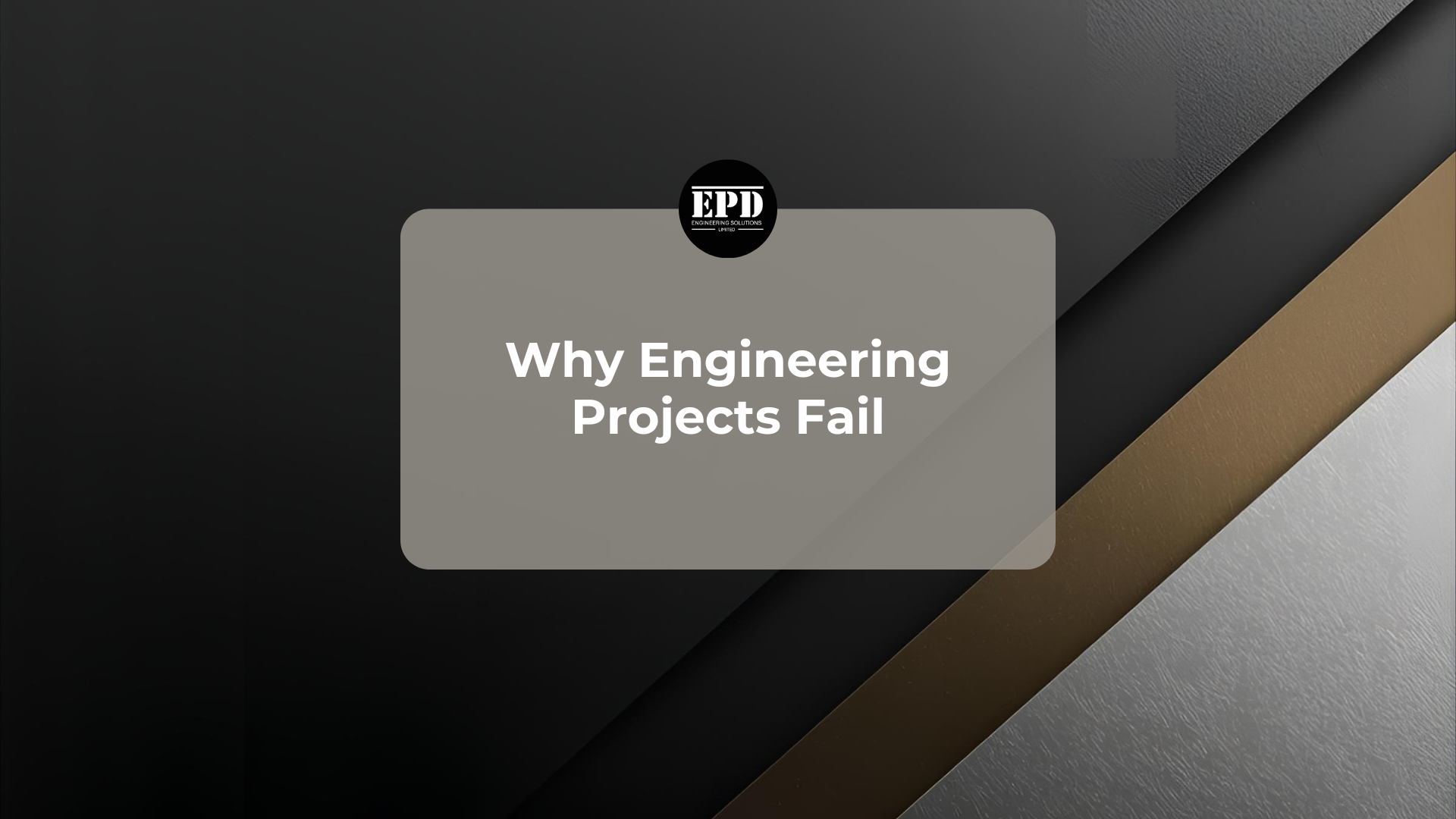Projects rarely fail at the end. More often, they fail at the beginning — in the planning, the communication, or the processes that underpin delivery.
Over the years, I’ve seen the same mistakes repeat themselves across industries and organisations. Sometimes the issues are small, but left unchecked they snowball into major delays, costly rework, and frustrated clients. The good news? Most of these pitfalls are preventable with the right focus at the right time.
In this article, I’ll explore four of the biggest traps that engineering projects fall into — and what you can do to avoid them.
1. Starting Without Enough Information
One of the most common mistakes is kicking off design without the full picture. At the time, it can feel like progress. “At least we’re moving forward,” the team says. But without complete information, what you’re really doing is setting up for roadblocks later.
The reality is that missing data, unclear scope, or incomplete requirements will catch up with you. The further into the project you go, the more costly those gaps become. A missing client input today becomes a two-week delay tomorrow.
A smarter approach:
- Break down the scope into three buckets:
- ✅ Tasks you can complete now and close off early
- ✅ Items that require immediate client input to avoid delays
- ✅ Less urgent elements that can wait without harming progress
- Clarify responsibilities early and follow up promptly with clients for missing inputs.
- Resist the temptation to “amble along” on incomplete tasks — it wastes time and creates frustration.
Taking time at the start doesn’t slow a project down. It prevents wasted effort later.
2. Ignoring Established Processes
Processes are built for a reason: to keep projects structured, safe, and compliant. Yet under pressure, they are often the first thing to go.
I’ve seen it happen countless times. Deadlines loom, so the team skips steps. Documentation goes missing. Design risk assessments are rushed — or forgotten. FMEAs are left until the last minute. Manufacturing controls slip. And when the client asks for their technical file at the end? The project grinds to a halt.
When processes are abandoned, projects slide into chaos. The uncomfortable truth is that it’s not the process that slows a project down — it’s skipping the process and then scrambling to recover.
To stay on track:
- Treat processes as non-negotiable. They exist to protect delivery, not to hinder it.
- Make sure your team knows why each process matters. People follow what they understand.
- Create accountability — assign ownership of each critical process to specific team members.
Stick to the process, and the project has a much greater chance of being relatively painless.
3. Drowning in Too Many Processes
On the other side of the spectrum, too much process can be just as damaging as too little.
Some organisations fall into the trap of over-engineering their own systems. A group of managers sets out to create the “perfect” project process — and suddenly, teams are buried under forms, approvals, meetings, and audits. Half of it isn’t needed, and much of it is impossible to follow consistently.
What happens next? Failure. Because when it comes to audit time, you can’t evidence that you’ve followed every single step. Worse, the process itself becomes a bottleneck that slows progress rather than enabling it.
The solution is balance:
- Focus only on processes that genuinely add value.
- Eliminate “nice to have” bureaucracy that clogs delivery.
- Design processes that suit your organisation, not someone else’s ideal model.
Lean, simple, and practical processes are the ones that stick.
4. Not Sticking to the Programme
What’s the point of a timing plan if nobody follows it?
A project programme should be a living tool, guiding delivery and aligning teams. Too often, though, it becomes little more than a pretty Gantt chart presented to management — and then ignored.
I’ve seen situations where a massive drawing pack lands on manufacturing with no warning, and the expectation to deliver in two weeks or less. Yes, the job gets done, but at what cost? Other projects are disrupted, bottlenecks form, and chaos spreads.
A timing plan doesn’t have to be perfect, but it has to be real:
- Keep it updated — and tell people when it changes.
- Share the programme widely so everyone knows what’s coming.
- Use it to coordinate between functions like purchasing, design, and manufacturing.
Key Takeaways
Projects don’t fail because of one catastrophic mistake. They fail because of small, preventable issues that snowball: starting without enough information, ignoring or overloading processes, and treating the programme as optional.
The fix isn’t complicated. It’s about discipline, communication, and balance:
- Clarify scope and priorities at the start.
- Stick to processes, but keep them lean.
- Use the programme as a genuine coordination tool.
These habits don’t just protect delivery. They build trust with clients, create smoother workflows for teams, and prevent costly rework.
Final Thoughts
At EPD Engineering Solutions, we specialise in helping businesses avoid these pitfalls. From structured project reviews to detailed engineering assessments, our goal is always the same: reduce risk, improve efficiency, and give your team the best chance to succeed.
If you’d like clarity on your next project before the hard costs kick in, we’d be glad to help.
📞 +44 7554 592744
📧 sales@epdengineeringsolutions.com
🌐 epdengineeringsolutions.com



No responses yet